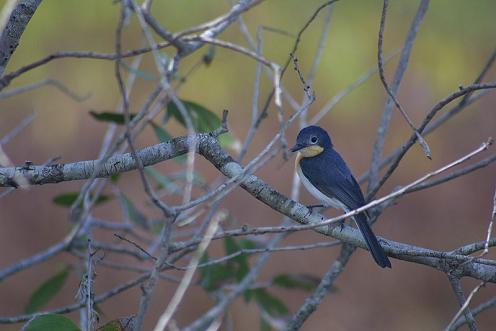
The study, led by biologist J. Albert Uy of Syracuse University, looked at two populations of monarch flycatchers, a species of bird native to the Solomon Islands, which are east of Papua New Guinea. One species is found on the larger main island of Makira, while the other is found on the smaller surrounding islands, However, besides their different locations, the only noticeable difference between the two populations is feather coloration: one has all black feathers while the other has a chestnut-colored belly.
The scientists wanted to see whether the two populations had stopped exchanging genes — a sign that these populations were on the road to speciation. Since tracking every member of both populations would be impossible, the team instead tested to see how mating males would respond to members of the other population. Monarch flycatchers actively defend their mating territories, and if a rival male enters, a fight often ensues. If males from one population attacked members of the other when they entered their mating territories, then clearly the two populations were still competing for the same mates and therefore still exchanging genes. If not, then the two populations were no longer inter-breeding.
The team placed taxidermy models into mating grounds and found that the males would attack the models of their own population, but seemed far less inclined to defend against the models of the other population. It seems, then, that these two populations are no longer competing for the same mates and are in most cases no longer mating. Thus, because they are no longer exchanging genes, their evolutionary paths a diverging, and speciation is occurring.
To further investigate, the team compared the genomes of the two populations to see what differences may have separated them. They found only one difference: the MC1R gene, which affects the color of skin and feathers, had changed between the two populations, which accounts for the difference in plumage. One genetic change was enough to cause a split between the two populations and move them towards speciation!
For more on the study, be sure to read the August issue of American Naturalist.

